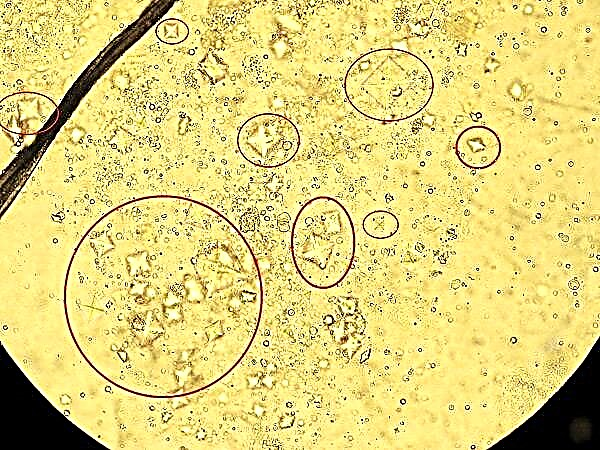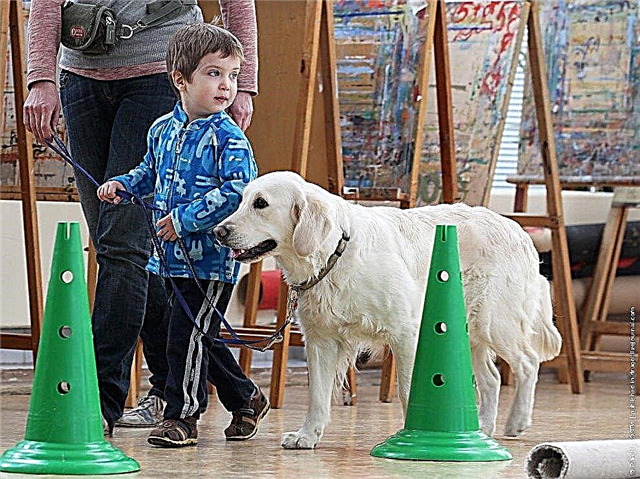To check if the child is healthy, the first step is to prescribe a general blood test. Not always, if the white blood cell count is normal, then the patient is healthy. Sometimes additional examinations are required. If a general blood test is taken from all small children, then a biochemical one is done exclusively according to indications. When such a study is assigned to a child, the parents are quite logically interested in what it is for, and what exactly can be determined with its help.

Blood for biochemistry in newborns is taken only in extreme cases
Purpose of the study
Important! A biochemical blood test in a child allows you to determine the metabolism of carbohydrates, lipids, enzymes, electrolytes and a number of other indicators responsible for certain processes in the child's body.
The list of biochemical parameters that can be assessed by deciphering the result of a baby's blood test is quite extensive. Research of most of them is carried out exclusively with certain objective indications. When it comes to standard research, it usually checks the following indicators:
- total protein;
- albumin;
- globulins;
- C-reactive protein;
- total, bound and free bilirubin;
- ALT;
- AST;
- alkaline phosphatase;
- glucose;
- creatinine;
- urea;
- lipids;
- cholesterol;
- triglycerides;
- beta lipoproteins;
- potassium;
- calcium;
- sodium;
- phosphorus.
In what cases is prescribed
Having found the answer to the question, the blood for biochemistry, which shows in the child, it is worthwhile to figure out in which cases the examination is necessary, and in which not the biological, but the general analysis is suitable.
The analysis is usually prescribed in the following cases:
- If you suspect the presence of hereditary diseases.
- To determine the degree of damage to the internal organs of the baby due to various diseases.
- If a newborn is sick with jaundice, and it is required to determine the cause of the development of the disease.
- If you suspect intrauterine infection.
- In order to check the effectiveness of the treatment.
- To clarify the preliminary diagnosis.

Blood from a vein can tell a lot about a baby's health.
How long to wait for the result
There is no unequivocal answer to the question of how long to wait for the result of the analysis for biochemistry. The specific time period depends primarily on what kind of result you want to get. The number of determined components is of great importance. It affects the speed with which a specialist can decipher the result, and the equipment used by the laboratory - the more modern and high-quality it is, the sooner ready-made indicators can be expected.
Do not forget that not every clinic has its own laboratory. Often, after collection, analyzes are sent to another organization for decryption, which quite naturally increases the time spent. If we talk on average, it takes at least 4-5 days to decipher the results of biochemistry.

The results of biochemical analysis have to wait for a relatively long time
How to take blood for biochemistry
Since a vein is required for a blood test for biochemistry, and it is quite problematic to find it in infants who are not yet a year old, doctors have to find alternative options. It is best to draw blood from where it is easier:
- from the veins of the forearm;
- from the veins on the head;
- from the back of the hand;
- from the veins in the calves, etc.
The procedure itself is the same as for adults. If possible, the area from where the blood is taken is tightly pulled with a tourniquet, the injection site is treated with alcohol, the vein is punctured, and blood is collected into a test tube. After the procedure, a cotton wool soaked in alcohol is applied to the place of sampling of material for research.
Any newborn baby perceives medical procedures as a stressful situation, therefore, the task of parents is to reduce possible negativity to a minimum. For example, to distract a child, you can take a rattle with you - it will distract the baby from an unpleasant procedure.
Biochemical analysis: norm and decoding
The list of indicators that biochemistry can reveal is very long. More often than not, a more concise list is sufficient for diagnosis.
Table, what this or that indicator means, and how to find out what its norm is
| Index | Indicator value | The norm is from 0 to 2 months. | The norm is from 2 months. up to a year |
|---|---|---|---|
| Total protein | Determines the content of protein in the blood | 45 to 79 g / l | 51 to 73 g / l |
| Albumin | Protein fraction, which is responsible for the transport of substances in the blood and maintaining pressure at the desired level | 30 to 45 g / l | 35 to 50 g / l |
| Globulins | Protein fraction responsible for the transfer of hormones and enzymes in the blood and stimulating immunity | 25 to 35 g / l | 25 to 35 g / l |
| C-reactive protein | Shows the presence in the body of foci of inflammation | Absent | Absent |
| Total bilirubin | Pigment showing an indicator of the breakdown of heme in hemoglobin | 17 to 68 μmol / L | From 8.5 to 21, μmol / l |
| Associated bilirubin | Pigment showing the level of hepatic cells with glucuronic acid | 4.3 to 12.8 μmol / L | 0.83 to 3.4 μmol / L |
| Free bilirubin | Allows to diagnose jaundice | 12.8 to 55.2 μmol / L | 2.56 to 17 μmol / L |
| ALT, AST | Identify liver disease | Up to 40 units / l | Up to 40 units / l |
| Alkaline phosphatase | Reveals acute forms of leukemia | Up to 150 units / l | Up to 644 units / l |
| Glucose | Energy source for cells | 1.4 to 4.7 | 3.3 to 6.1 mmol / L |
| Creatinine | Determines the condition of the kidneys | 35 to 110 mmol / L | 35 to 110 mmol / L |
| Urea | Determines the condition of the kidneys | 2.5 to 4.5 mmol / L | 3.3 to 5.8 mmol / L |
| Lipids | Shows the amount of fat in the blood | 4 to 5 g / l | 5 to 7 g / l |
| Cholesterol | Participates in the synthesis of hormones | 1.6 to 3 mmol / L | 1.8 to 4.9 mmol / L |
| Calcium | Participates in many processes in the body | 2.2 to 2.5 mmol / g | 2.3 to 2.8 mmol / g |
| Sodium | Forms an alkaline balance in the blood, necessary for the functioning of the kidneys | 135 to 155 mmol / L | 133 to 142 mmol / L |
| Phosphorus | Responsible for biochemical reactions | 1.8 to 2.7 | 1.3 to 2.3 |
When taking a biochemical blood test from a child, according to the decoding in the table, you can understand whether everything is normal, or there are deviations.

Taking blood for analysis from a baby is more difficult than from an adult
Who to entrust decryption
Since the child's body reaction to many diseases is much more pronounced than in adults, it is recommended to take tests and, accordingly, get a transcript of the results in reliable laboratories where experienced specialists work. The analysis should show what problems the child has, and an experienced doctor should identify abnormalities and prescribe adequate treatment.
Increasing and decreasing indicators
Deviations from the norm towards a decrease or increase in individual indicators indicate a violation of the functions of the internal organs of the baby, hormonal failure, an autoimmune process, a lack or an excess of vitamins and trace elements in the body.
The parent is strongly discouraged from ignoring the pediatrician's referral for a biochemical test. Yes, this is not the most pleasant procedure for a child, but it is with its help that you can timely identify a serious disease and successfully cure it.



